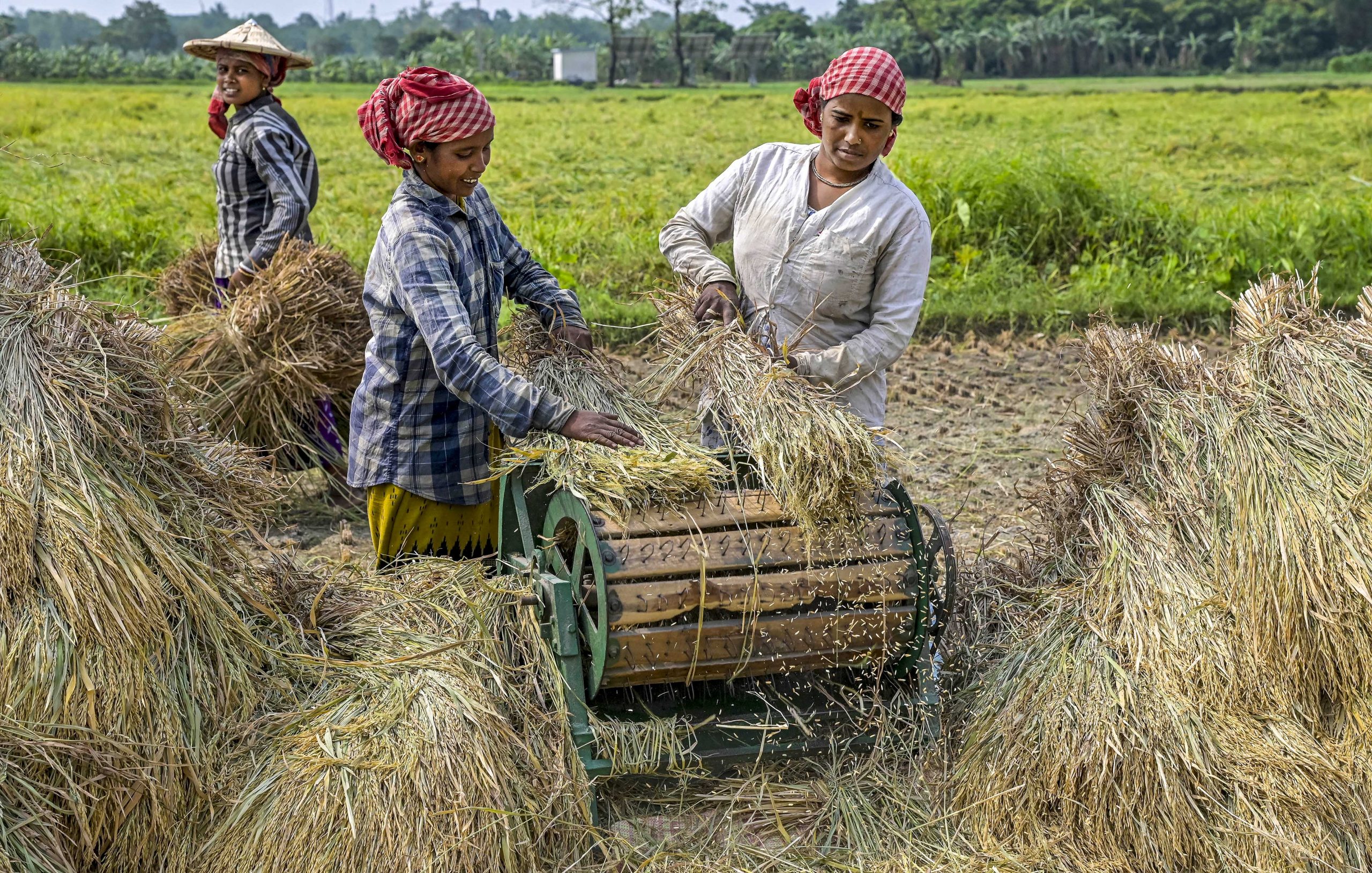“In India, fewer women participate in labour markets than their male counterparts, thereby impeding the nation’s ability to ensure equitable growth and development,” Deloitte economist Rumki Majumdar stated in conversation with Financial Express.
According to Majumdar, India confronts the enormous problem of producing broad-based jobs, i.e. jobs for youth as well as jobs across industries. The COVID-19 epidemic had a negative impact on job quality in the country, according to Majumdar. Another issue is that fewer women participate in the labour market than their male counterparts, which generates inequity and impedes progress, she added.
Also read: International Labour Day 2022: History and significance
Fewer women in labour markets
“In India, fewer women participate in labour markets than their male counterparts, thereby impeding the nation’s ability to ensure equitable growth and development,” Associate Director at Deloitte India, Majumdar said. “In 2012, the G20 countries committed to reducing the gender gap in labour participation by 25 per cent by 2025 (the Brisbane 25×25 goal). By that metric, India will have to reduce the gender gap in participation by over 13 per cent by 2025,” she added.
The CMIE stated that the female labour force participation rate in India was 9.4 per cent between September and December 2021.
The Centre for Monitoring of Indian Economy (CMIE) reported earlier this month that India’s labour force decreased by 38 lakhs in March to the lowest level in the previous eight months, with a decline in both employed and unemployed people.
Also read: Why do we celebrate Labour Day?
“What the labour market statistics of March 2022 show is India’s biggest sign of economic distress. Millions left the labour markets, they stopped even looking for employment, possibly too disappointed with their failure to get a job and under the belief that there were no jobs available,” CMIE added.
Government defers inference
The Union Labour and Employment Ministry responded by refuting the assertion and said that it would be factually incorrect to infer that half of the working-age population had lost hope of finding a job. According to the government, the working-age population has dropped out of the labour force because a high proportion was pursuing education or engaged in unpaid tasks such as caring.
Deloitte decreased India’s economic growth prediction for FY 2023 by 45 basis points, to 8.3 per cent to 8.8 per cent, in its India economic outlook report released this month, citing the ongoing conflict in Ukraine. The big four consultant business, on the other hand, believes that India’s strong economic fundamentals will help it avoid the long-term effects of conflict.
Also read: Women pay highest price in conflict, now in Ukraine: United Nations
“The results of growth-enhancing policies and schemes (such as production-linked incentives and government’s push toward self-reliance) and increased infrastructure spending will start kicking in from 2023, leading to a stronger multiplier effect on jobs and income, higher productivity, and more efficiency—all leading to accelerated economic growth,” according to the report.
Why do we need to focus on women in the labour market?
Michelle Obama’s iconic statements that “No country can ever truly flourish if it stifles the potential of its women and deprives itself of the contributions of half of its citizens,” demand more attention than ever as we commemorate International Labor Day.
In India, the proportion of women in the labour force has declined significantly during the last two decades. The share fell to an all-time low of 18.6% in 2020. With this pitifully low rate, India has emerged as one of the region’s worst-performing countries. Almost 47% of women have lost their jobs as a result of the COVID-19 epidemic and related lockdowns.
Also read: Women’s panel issues notice to SBI over guidelines for ‘temporarily unfit’ pregnant women
Giving women a boost in their entrepreneurial spirit can considerably enhance female labor-force participation and overall employment levels. According to a survey by Bain & Company and Google, women entrepreneurs in India have the potential to create 150-170 million employment by 2030. Furthermore, the digital gender difference must be closed.
According to NFHS data, only 33% of female internet users utilise the internet, compared to 57% of male internet users. Bridging this internet access divide would allow women to choose remote working arrangements, giving them greater control over their time and increasing their involvement in the workforce.
Socio-cultural barriers
Socio-cultural factors have a significant impact on women’s labor-force involvement. Because of its tight commitment to societal conventions and patriarchal ideals, Indian society disproportionately throws the burden of unpaid work on women, especially home labour, childcare, and elderly care. According to the 2014 Global Gender Gap Index, India has the largest discrepancy between men and women in the average number of minutes spent each day on unpaid work—a difference of 300 minutes.
Also read: Indians cheer on decision to induct women in National Defence Academy
Another aspect of gendered societal norms is occupational segregation, which confines women to low-wage and low-value jobs. Furthermore, the societal stigma connected with women working outside the home has hampered their capacity to enter the labour field.
The double whammy of societal notion that it is the man’s responsibility to provide for the family and women are simply supplemental earners has reduced female participation even further as the economy has developed. Another factor discouraging women from entering the labour field is the rise in violence against women. According to IWWAGE research, while the all-India female labour force participation rate (FLFPR) fell by eight percentage points between 2011 and 2017, the total rate of crime against women and girls tripled to 57.9%.
Increased mechanisation in the traditionally labor-intensive agriculture and manufacturing sectors has added to women’s troubles. Women employed in these areas have been displaced on a big scale as a result of such automation. According to a McKinsey Global Institute estimate, over 12 million women in India may lose their employment to automation by 2030.
Also read: Canada women’s rugby team tackles social issues ahead of Tokyo Olympics
Legislation like the Maternity Benefit (Amendment) Act of 2017, which raised paid maternity leave from 12 to 26 weeks, has the unintended impact of discouraging firms from hiring more women. The lack of comparable perks for fathers generates a prejudice against female employees. Furthermore, such legislation reinforces women’s primary caretaker roles. Finally, there is a psychological barrier among women who tend to underestimate their abilities and are less confident in their capacity to get work.
What can be done to help women in the labour market?
Because care-giving accounts for a major amount of women’s unpaid employment, offering facilities such as creches, childcare centres, and childcare subsidies will alleviate the burden on women and free up their time, allowing them to enter the labour force. The Sangini Child Care Centres of the Self Employed Women’s Association could be a good example for such centres (SEWA). A beneficial side effect of such care centres would be that they would create more job opportunities for women.
Also read: A familiar question at Cannes: Where are the women?
Women’s skilling and training programmes are another worthy area of consideration. According to the NSS Report 2011-12, women who have completed vocational training had greater levels of FLFP, independent of educational degree.
Need of a wholistic approach
Policy action is required to address the issue of insufficient women-friendly infrastructure and the lack of female educators in such training schools. Both of these factors have hampered women’s participation in such skill-building programmes. Furthermore, effective implementation of legislative safeguards and anti-discrimination legislation can go a long way toward assuring equal treatment and opportunity for women in the labour market.
As a result, addressing the issue of declining female labour force participation will necessitate the development of a holistic mechanism encompassing the state, community, and home. Only through the joint efforts of these many institutions will India be able to economically empower the other half of its population.







